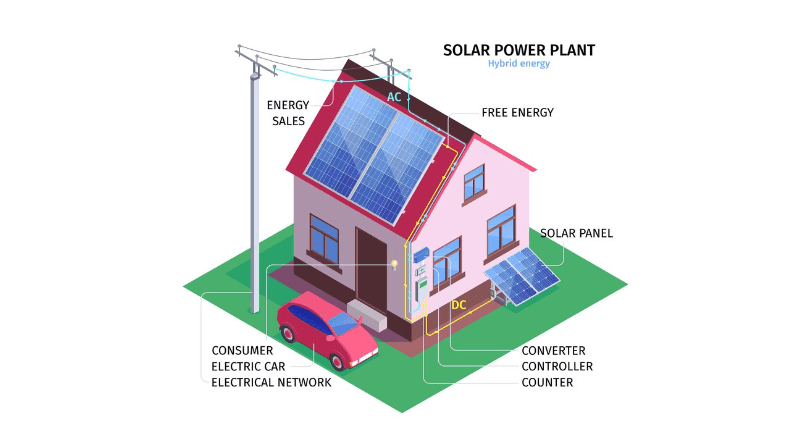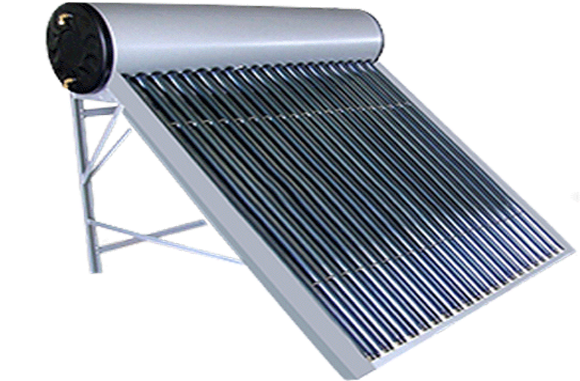In recent years, the rooftop solar revolution has been casting its radiant glow across the globe, illuminating not just rooftops but also minds with the promise of sustainable energy solutions. With a growing emphasis on renewable resources, rooftop solar panels have emerged as a beacon of hope in the quest for cleaner, greener energy alternatives. In this post, we understand the world of rooftop solar, uncovering its significance, benefits, and the supportive role of government initiatives.

Table of Contents
ToggleIntroduction
A rooftop solar power system, or rooftop PV system, is a photovoltaic (PV) system that has its electricity-generating solar panels mounted on the rooftop of a residential or commercial building or structure.
Present-day solar PV technology, a low-carbon energy solution, is well suited for country and the Pacific.With large areas of the region endowed with bountiful solar radiation, many countries in the region have the ideal conditions for utilizing solar energy.
A rooftop solar PV installation comprises of PV panels assembled in arrays, mounting frames to support the panels and secure them to the roof, wiring, inverters, and other components depending on the type of installation. The roof site must be able to accommodate all of these components.
Suitable requirement for roof to install solar PV panels
1.Accessibility
Access to the roof is necessary for installation and maintenance. For the purpose of installing and maintaining the system, workers must be able to physically access the location and lift the solar system’s components onto the roof.
2.Roof area
The roof area available for the PV power plant can be measured with the use of a roof plan. The plan should list the height, slope, and placement of the roof, along with any additional structures that may be on the roof, along with the latitude and longitude of the location
3.Roofs lifespan
Check when the roof on an existing building would need to be replaced first. It is more economical to install a rooftop PV system after a new roof is installed if a roof is getting close to the end of its useful life. Additionally, including a system into a new roof’s design is simpler.
Lifespan of solar rooftop is around 20-25 years. So lifespan of roof will reqire more to achieve appropriate output from solar rooftop.
4.Roof additional weight capability
The engineer should also be able to determine if the roof can bear the additional weight of a PV system. As a general rule of thumb, a crystalline PV system will place about 15–20 kilograms per square meter (kg/m2) of dead load on the roof, but this varies depending on the panels and mounting system used, the spacing between panels, and the wind load.
5.Electrical load
Check recent load of your building or home. Electrical load generated from solar rooftop is comparable more to your requirement than make arrangement to use excess electrical load.
6.Roof shading
Nearby buildings or trees can shade a roof during certain periods of the day, which will lower the power output of the solar PV system. Although shading changes throughout a year, observing the roof at various times during a day gives a fair idea of the typical number of sunlight hours.
7.Dust free environment
if solar rooftop install where environment have very dust, than cleaning of solar pv panel require regular to take more power output. So it’s take maintenance cost to clean solar pv panel.

Benefit of Solar rooftop
Solar energy is freely available, and the PV system does not entail environmental costs for conversion to electricity.
Solar rooftop systems require little maintenance.
Financial support system.
PV systems nowadays are based on proven technology that has operated for over 25 years.
Solar rooftop systems create no pollution or waste products while operating, and production impacts are far outweighed by environmental benefits.
No fuel require to operate.
Take profit from excess power sell to grid or near by building.
Government initiate for solar rooftop
Government support for renewable/solar energy may consist of policies that guide action towards renewable energy development. They are contained in a variety of places, such as national energy development plans, utility development plans, and policy statements from lawmakers or energy regulatory agencies. An example of such a policy would be a presidential decree that supports increasing renewable energy in the overall energy mix.
Indian government initiative underlining India’s commitment to solar energy is the Solar Park Scheme, designed to establish 50 Solar Parks of 500 MW and above with a cumulative capacity of ~38 GW by 2025-26.
Phase-II of Grid Connected Rooftop Solar programme is further extended upto 31.03.2026 without any finincial application. The Ministry of New and Renewable Energy (MNRE) has announced a scheme that aims at 100 per cent solarization of Modhera in Gujarat.
India’s first portable solar rooftop system was inaugurated at Swaminarayan Akshardham temple complex in Gandhinagar. The installation of 10 PV Port systems in the temple complex is supported by the German development agency Deutsche Gesellschaft fur Internationale Zusammenarbeit (GIZ).
Pradhan Mantri Kisan Urja Suraksha evam Utthan Mahabhiyaan (PM-KUSUM) The scheme aims to add solar capacity of 30,800 MW by 2022 with total central financial support of Rs. 34,422 Crore including service charges to the implementing agencies.
PM suryaghar yojna launched by prime minister to give free 300 units electricity to residential household.
Frequently Asked Question(FAQ)
What is rooftop solar energy?
Rooftop solar energy refers to the installation of solar panels on the rooftops of buildings or structures to harness sunlight and convert it into electricity. These solar panels typically consist of photovoltaic (PV) cells, which generate direct current (DC) electricity when exposed to sunlight.
What is net metering?
Net metering allows solar energy system owners to sell excess electricity back to the grid, offsetting their utility bills and incentivizing renewable energy production. This enables consumers to receive credits for the electricity they generate but do not consume, promoting greater energy self-sufficiency and grid stability.
How many area required for installation of 1 kW solar rooftop?
Solar rooftop plan will require about 8-10sq.mt area for 1 kW system.
How many Unit generate in 1 kW solar plant?
1 kW solar plant will generate approximately 4-5 units per day(depending on the solar radiation and ambient temperature of that region).
What is the life of solar PV system?
Solar PV system will operate for 25 years or more than 25 years. The inverter, which are focus part of solar PV system, may need replace once in 25 years.
Can rooftop solar panels generate electricity during cloudy days or at night?
While solar panels are most efficient in direct sunlight, they can still generate electricity on cloudy days or during low-light conditions. Additionally, excess electricity generated during sunny periods can be stored in batteries for use during nighttime or periods of low sunlight.
How many panels for 1kW?
Typically, one needs to install 3 to 4 solar panels of 330-250-watt to generate enough electricity for a 1kW solar system.
What are the main components of a Grid Connected Rooftop Solar PV system?
Solar Panels,Inverter,Panel mounting structure,Bi-direction meter,balance of system.



Pingback: Solar Energy-working principle, advantages, Government initiatives - Electricalsphere
Pingback: Power quality issues of rooftop solar PV plant on LV distribution